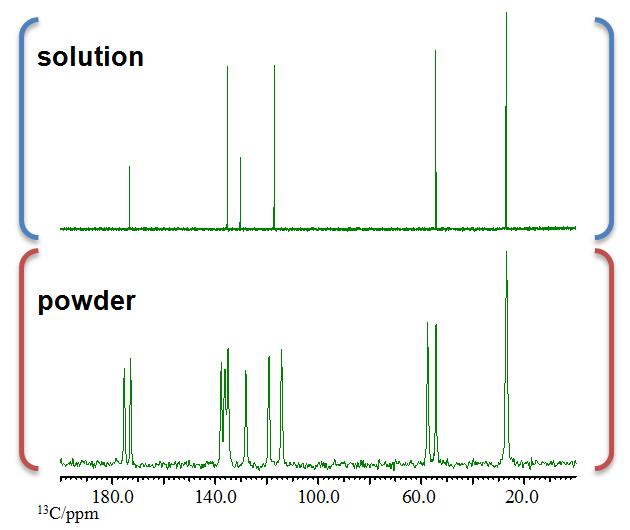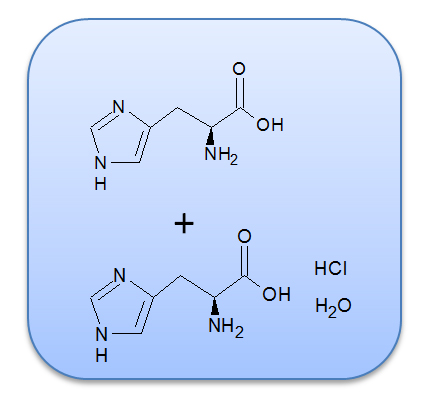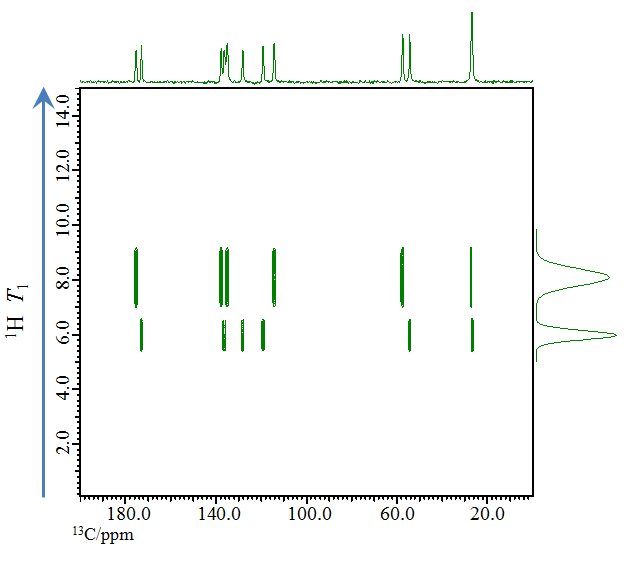Spectral Separation of mixtures by solid state NMR
NM180015E
Fig.1 show 13C NMR spectra of mixture of L-Histidine and L-Histidine Hydrochloride Monohydrate in solution and solid state. Only a single state is observed in solution state NMR, as a contrast, individual crystal state can be distinguished in solid state NMR. Solid state NMR is a powerful tool to obtain information in the crystalline state which would be lost in the solution state.

Fig.1
upper:13C solution NMR spectrum (10mg of each sample solved in D2O)
lower:13C CPMAS spectrum of the mixture

ROSY is a method which provides a separate 13C CPMAS spectra from the mixture. Fig.2 shows the spectral separation of each component by utilizing the different 1H T1value of L-Histidine and L-Histidine Hydrochloride Monohydrate by ROSY method. Thus, ROSY is clearly useful tool for analysis of mixtures.

Fig.2 :ROSY spectrum
ROSY method
ROSY(Relaxation Ordered SpectroscopY)1) is a spectral separation method using the difference of 1H T1 value of each components in the mixture. Ordinally, each compound has unique 1H T1 value in solid state NMR. Therefore when each compound has significantly different 1H T1 value, ROSY method can be applied.
Tips of ROSY
Sometimes, ROSY method fails to separate each component when 1H T1 value in a single component becomes not unique by ultra fast MAS. Therefore MAS speed around 10 kHz is recommended for ROSY, and TOSS is effective to suppress SSB.Sample:mixture of L-Histidine and L-Histidine Hydrochloride Monohydrate
Spectrometer:JNM-ECZ500R
Probes:5mmSuperCOOL(solution), 3.2mm HXMAS(solid)
Reference
1) Y. Nishiyama, M.H. Frey, S. Mukasa, H. Utsumi, J. Magn. Reson. 202(2010) 135.
- Ifyou want to see a printed version, please click this PDF file.

PDF 380KB
SEARCH APPLICATIONS
Related Products
Are you a medical professional or personnel engaged in medical care?
No
Please be reminded that these pages are not intended to provide the general public with information about the products.
